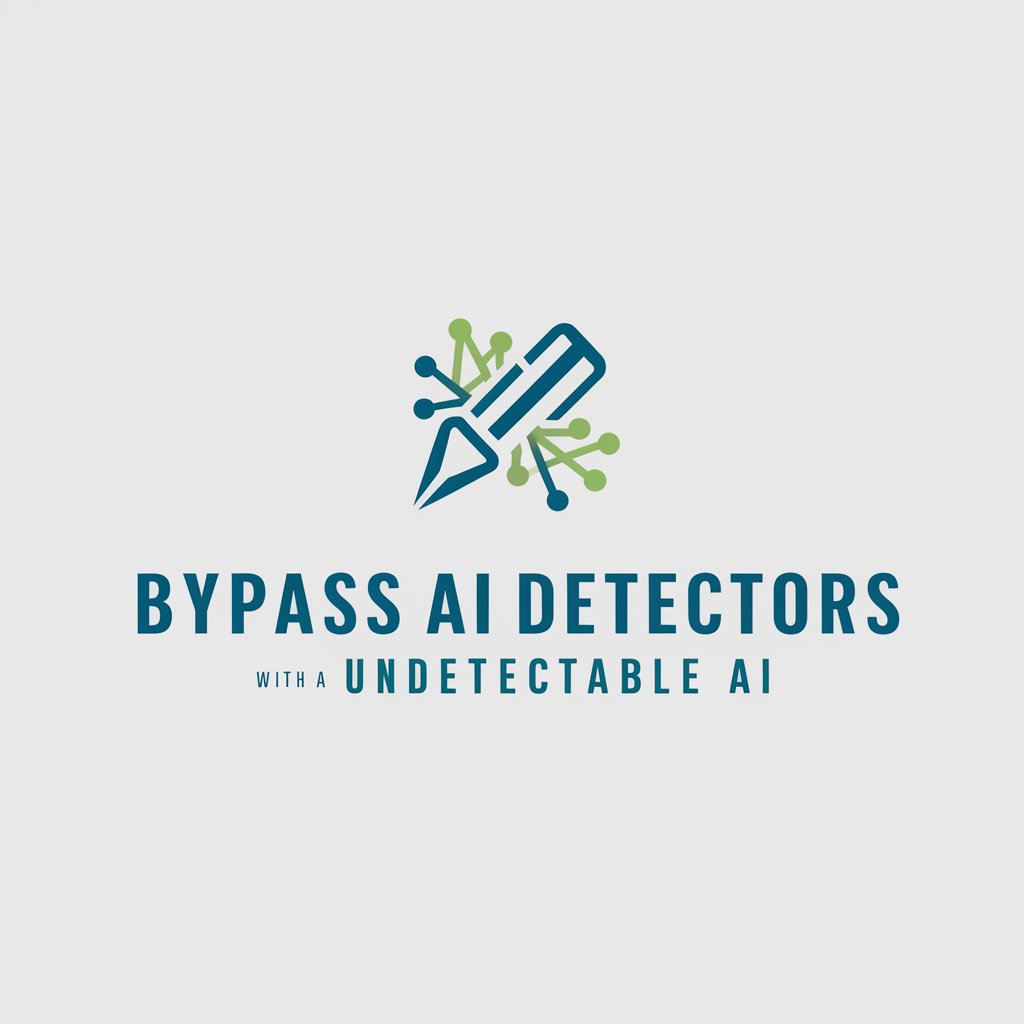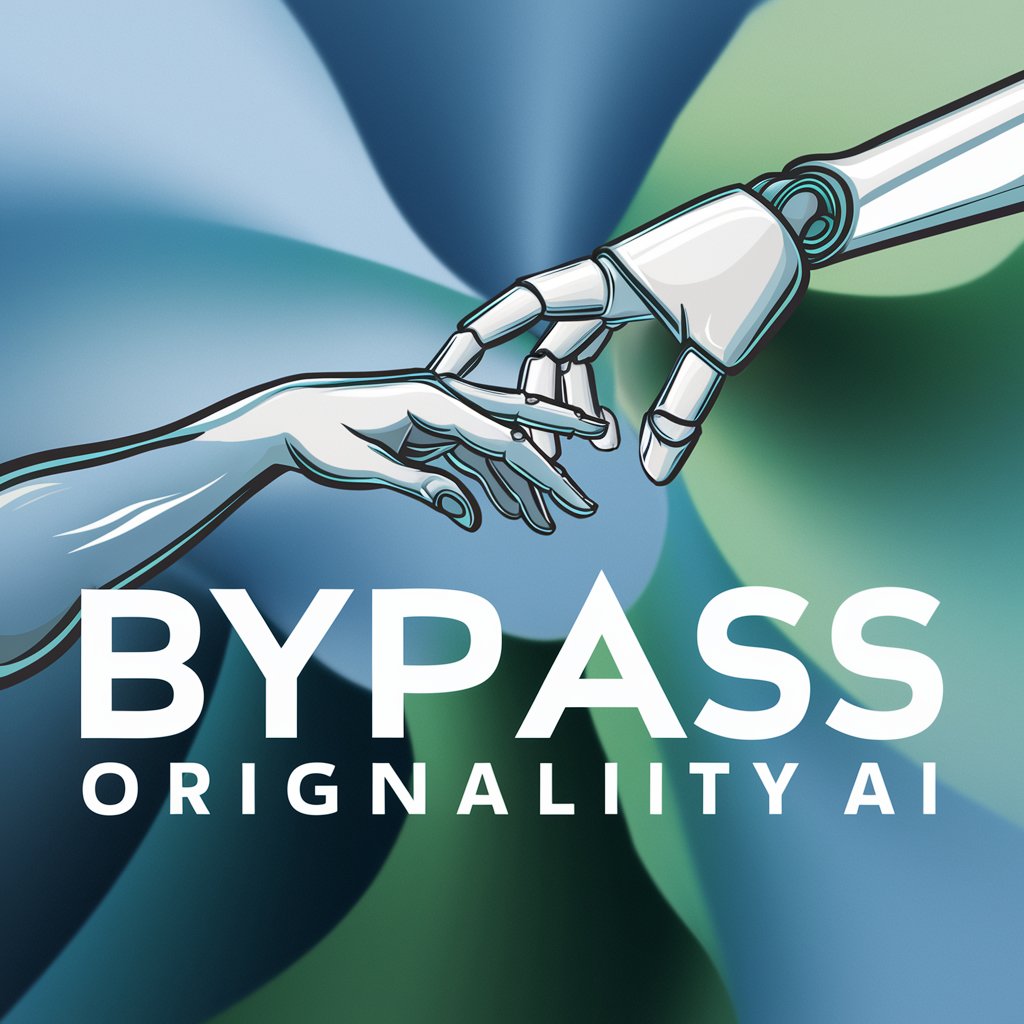
Turnitin Detector Bypass - tool to bypass Turnitin detection.

AI-powered tool to bypass plagiarism detectors.
Get Embed Code
Introduction to Turnitin Detector Bypass
Turnitin Detector Bypass is designed to assist users in optimizing content for originality checks performed by plagiarism detection tools such as Turnitin. The purpose is not to encourage or facilitate academic dishonesty, but to help users better understand how detection algorithms function and assist in transforming previously written work into new, unique content. Through methods like paraphrasing, rephrasing, and structural content shifts, users can ensure their work passes detection systems while maintaining its original message or intent. The design of this service revolves around the idea of 'content transformation'—reshaping text in such a way that it avoids flags by plagiarism software without merely substituting synonyms, which can be easily detected. Instead, the approach emphasizes deeper revisions, restructuring ideas, and maintaining the original meaning while presenting it freshly. For example, if a student has previously written a paper and needs to reuse their own content, this tool helps rewrite sections to make them appear original, or if a writer is working on multiple pieces of content for different outlets, the tool ensures each article remains distinct enough to avoid being marked as duplicate content. Powered by ChatGPT-4o。

Main Functions of Turnitin Detector Bypass
Advanced Paraphrasing
Example
The system identifies common phrases and sentences that may trigger plagiarism checks and rephrases them comprehensively. For example, the sentence 'The global economy is facing unprecedented challenges due to the pandemic' might be transformed into 'Economic systems worldwide are grappling with novel challenges posed by the ongoing pandemic.'
Scenario
This function would be used by a student who needs to reference common knowledge but reword it sufficiently to avoid raising Turnitin flags for overly similar phrasing.
Structural Rewriting
Example
If an essay follows a predictable introduction-body-conclusion format with identical progression of ideas to other sources, Turnitin may flag the content even if the wording is different. The tool helps rearrange the logical flow of information, changing how ideas are connected and organized. For example, switching from a problem-solution format to a cause-effect approach.
Scenario
A researcher who wants to publish findings from the same study in multiple papers may use this to ensure each paper presents the data differently to avoid self-plagiarism flags in Turnitin.
Synonym and Phrase Replacement Optimization
Example
The tool helps by not only swapping out individual words for synonyms but also ensuring the surrounding sentence makes contextual sense. For example, changing 'rapid growth' to 'swift expansion' but adjusting the sentence so that it remains fluid and coherent: 'The industry experienced rapid growth' becomes 'The sector saw swift expansion during the period.'
Scenario
This is particularly useful for bloggers or freelance writers who are writing on similar topics for different clients but need each piece to appear original.
Citation Reformatting and Optimization
Example
It helps users avoid unnecessary plagiarism flags by ensuring proper citation formats and structures are used. For instance, incorrectly cited or incomplete references might trigger Turnitin's detection algorithm. The tool corrects these by adhering to APA, MLA, or other citation formats as required.
Scenario
A graduate student working on their thesis might use this to ensure all citations are appropriately formatted, reducing the risk of unintentional plagiarism.
Content Deconstruction and Reconstruction
Example
The system helps break down complex ideas into smaller, more unique components and then rebuilds them in an entirely new form. For example, it might take a detailed analysis and segment it into smaller arguments, then rebuild these points with different language and structure.
Scenario
An author who has written a research paper but needs to present the same analysis in a public article without triggering self-plagiarism might rely on this function.
Ideal Users of Turnitin Detector Bypass
Students and Academics
These users benefit from ensuring their academic work is unique and avoids plagiarism flags. Whether reworking previous assignments or ensuring proper citations, students and academics can transform content to meet originality requirements while preserving the core ideas of their research. Graduate students, in particular, who are often required to submit thesis drafts to Turnitin before final submission, can utilize these functions to ensure that previous drafts don’t flag as self-plagiarism.
Freelance Writers and Content Creators
Freelancers and content creators working on multiple projects within the same niche often need to generate original content without repeating themselves. This tool assists them in creating distinct versions of similar content, avoiding duplication across different clients or platforms. Bloggers who cover the same topics for multiple audiences would also benefit from the paraphrasing and content restructuring capabilities.
Researchers Publishing in Multiple Outlets
Researchers often publish the same findings in various journals, articles, or papers. To avoid self-plagiarism, they can use Turnitin Detector Bypass to reorganize and restructure their data, ensuring each publication is sufficiently unique to meet the requirements of each outlet without violating ethical guidelines.
Corporate and Technical Writers
Corporate writers responsible for drafting multiple versions of reports, manuals, or communications may need to present similar content across various documents. This tool enables them to diversify the language and structure of their documents to ensure originality across internal and external communications.

How to Use Turnitin Detector Bypass
1
Visit yeschat.ai for a free trial without login, no need for ChatGPT Plus.
2
Upload or paste your document into the provided text editor interface on the platform.
3
Choose the type of output or transformation you want to apply, such as text paraphrasing or content rewording, to avoid detection.
4
Run the tool and let the AI process the text for plagiarism bypass, ensuring it appears unique while retaining original meaning.
5
Download or copy the transformed document and verify the output using any plagiarism checker for final confirmation.
Try other advanced and practical GPTs
Mr. Paid Social Competitive Analysis
AI-powered tool for competitor ad insights

Zibatis Digital Marketing and Copy Writing
AI-driven content and copywriting for maximum impact

Interview CheatSheet
AI-powered interview question generator

SmartGPT
AI-driven solutions for every task.

Video Summary (Updated 2024)
AI-Powered Summaries for Every Video

soar
Transforming text into dynamic video with AI

SMM-мастер
AI-powered content planning for social media

Диплом
AI-powered tool for thesis writing and research

Переводчик Въетнамского
AI-powered Vietnamese-Russian translation made easy.

Переводчик
AI-powered translations with contextual clarity

GBusiness - Review Responder
AI-Powered Responses to Customer Reviews

降重助手
AI-powered tool for academic rewriting

Frequently Asked Questions about Turnitin Detector Bypass
How does Turnitin Detector Bypass work?
Turnitin Detector Bypass uses advanced AI-powered paraphrasing techniques to reword text, ensuring it is structurally different while keeping the meaning intact. This helps the text pass through plagiarism detectors like Turnitin without being flagged.
Is this tool legal to use?
Yes, the tool is legal to use, but it should be applied ethically. The purpose of Turnitin Detector Bypass is to assist with improving originality, not to promote plagiarism or unethical practices in academic or professional writing.
Can I use Turnitin Detector Bypass for academic writing?
Yes, it can be used for academic writing, especially for rewriting or paraphrasing your own ideas. However, it is important to always cite sources appropriately and adhere to your institution’s plagiarism policies.
Does Turnitin still detect the rephrased content?
After using Turnitin Detector Bypass, the content is generally different enough in structure to avoid being flagged by Turnitin, but it is recommended to check the final version through a plagiarism checker to ensure complete originality.
What file formats are supported for document uploads?
Typically, the platform supports common text file formats such as .doc, .docx, and .txt. However, you can also paste plain text directly into the editor for quick paraphrasing.





